Time: 11:30AM 3:30PM
Location: Eleven Mile Canyon
South Platte River 09/23/2024 Photo Album
My cold was in the waning stages, and I was anxious to undertake another fly fishing outing. The brief visit to Clear Creek ahead of the impending storm on Saturday was not very satisfying, so I considered my options. It had been a while, since I fished in a waterway that was not a small mountain stream, so I checked the flows on the South Platte River at Lake George and the flows on the Arkansas River below Salida. The South Platte in Eleven Mile Canyon was hovering in the 105 CFS range, and the Arkansas was at 450 CFS. Both of these readings were within my ideal range, but I chose the South Platte, when I read that the tricos and blue wing olives continued to be active.
I arrived at my usual pullout by 11:00AM, and I was pleased to see only one other car parked below me, and that car was accounted for by a solitary angler in the long slow pool down the road from the pullout. The temperature display showed 53 degrees, so I pulled on my fleece cardigan and raincoat, and then I grabbed my Sage One five weight, in case I waged a battle with a larger fish.
Once I was prepared for a day of fly fishing, I hiked up the road for .25 mile, and then I angled down a steep bank to the the edge of the river. The water was extremely clear, and the flows were elevated a bit from my preferred level but certainly favorable for fly fishing. I added a 2.5 foot section of 5X tippet to the 4X that my guide tied to my tapered leader last Wednesday, and then I knotted a peacock hippie stomper, beadhead salvation nymph and sparkle wing RS2 to my line.
I began casting in some deep pockets bordered by large exposed boulders, and I experienced two long distance releases almost immediately. This was an ominous sign for the day, but I persisted and finally managed to coax some fish to my net. They were all small brown trout in the seven to nine inch range, but I was pleased to learn that the trout were tuned into my flies. The sparkle wing RS2 was the favored target of the trout in the early going.
After a half hour I encountered the long slow moving pool that entertained me repeatedly in the spring with dense baetis hatches and fast action. I moved immediately to the entering runs at the top of the pool, but on this day the trout were not interested in my offerings. After I devoted a concentrated effort to the runs, I decided to consume my lunch on a large rock on the bank above the pool. From this vantage point I could observe the entire pool in case some insect activity commenced.
Unfortunately that was not the case, so after lunch I continued my progression up the river. Another angler was above me, but a considerable distance existed between us allowing me to prospect some nice pockets before arriving at the next large pool. Once again I began working the pockets, and in a repeat of the morning, I landed four more smaller trout in the six to ten inch band of length. One was a rainbow and the others were small browns. Both the salvation and RS2 generated takes during this time period.
I attained a fish count of eight rather early in my upstream journey, and I was pleased with this success, but I was puzzled by the lack of size and the absence of fish in the obvious large pools. Finally, in a deep elongated pocket below a slightly exposed boulder, I hooked and landed a superb fifteen inch brown trout. It snatched the salvation nymph, just as it began to swing in front of another boulder at the bottom of the pocket.
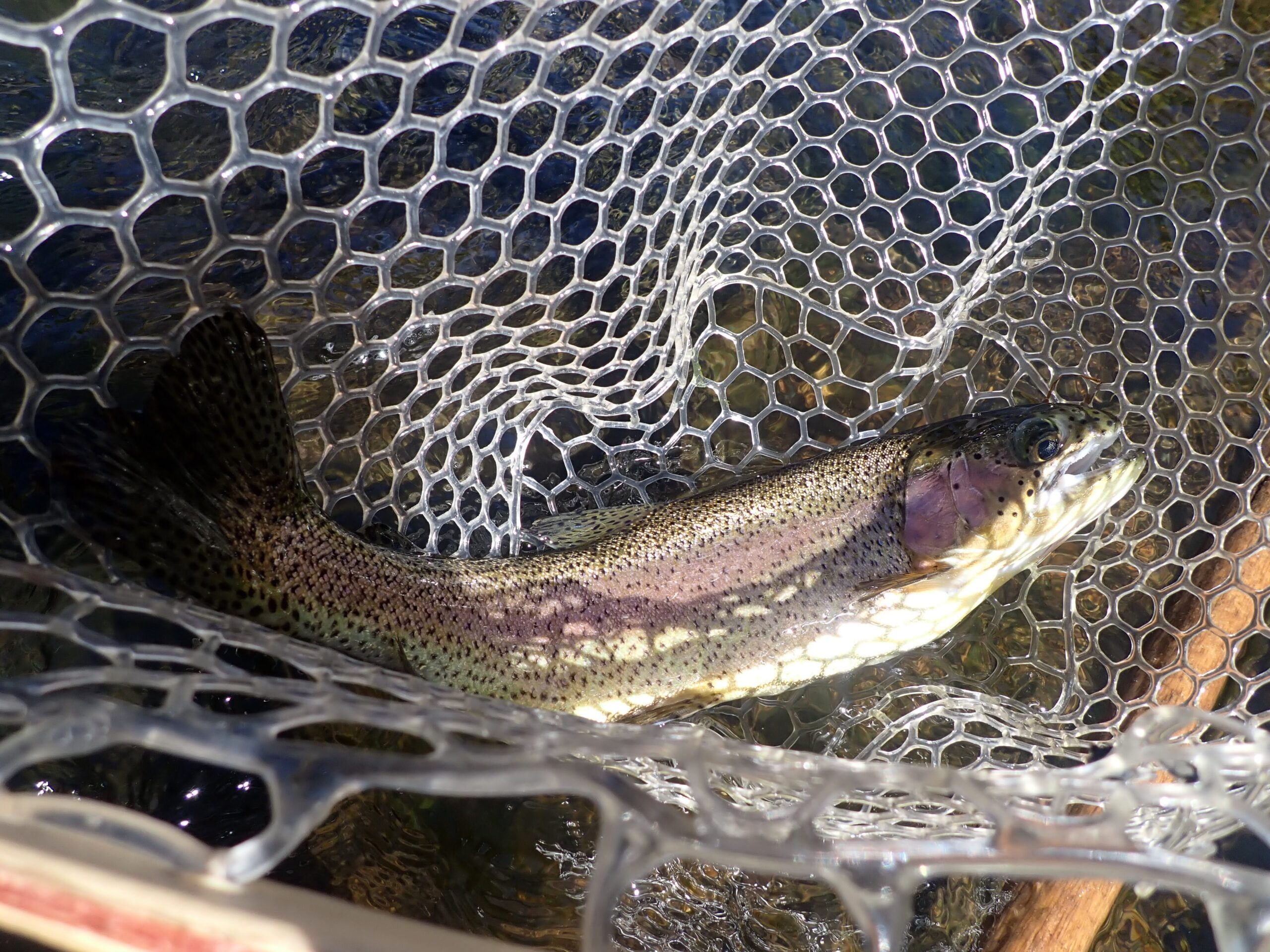 First of Two Gorgeous Rainbow Trout
First of Two Gorgeous Rainbow Trout
This catch of a larger fish propelled my confidence, and I continued with the same strategy for the remainder of my time on the water, until I built the count to nineteen. During the day, I landed two trout in the fifteen inch range and one thick slab that approximated sixteen inches One of these was the brown trout described above, and the other two were rainbows. During the afternoon the salvation nymph became the breadwinner, or should I say fish winner? Movement was definitely a trigger, as many of the fish attacked, when the fly began to swing at the tail, or when I imparted a lift to recast. In fact I was amazed that several fish grabbed the fly, after it spilled over rocks at the tail of a pocket or run.
The other factor that defined success was identifying the water type that the trout preferred on September 23. As I discovered in the morning, they loved seams along fast water with large exposed rocks nearby for protection. I actually began skipping the large pools, and I targeted the faster runs and pocket water among exposed rocks in between the major pools. This worked perfectly, since some of the pools were occupied by other anglers, and I simply took advantage of the sections that they avoided.
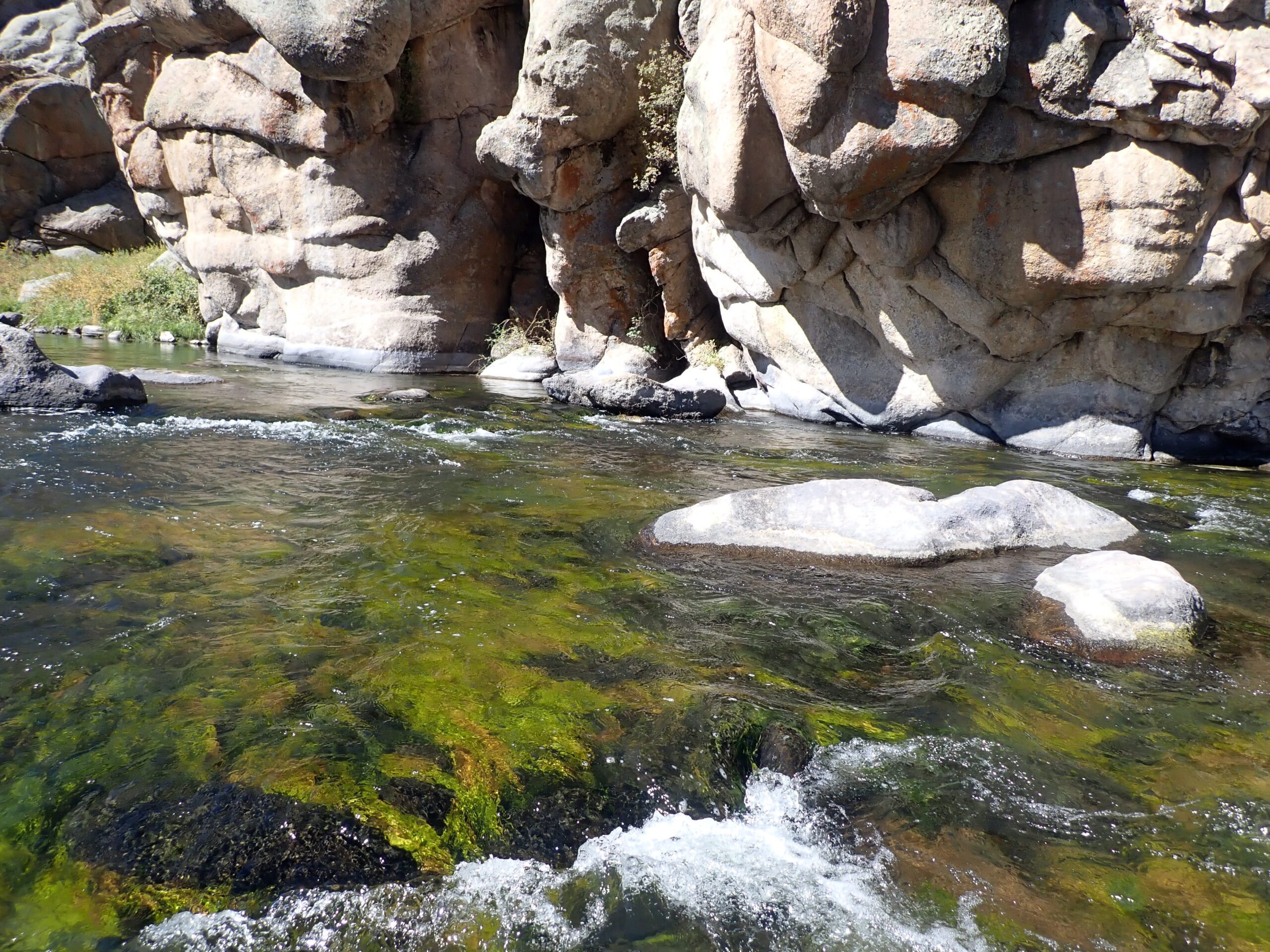 The Type of Water That Produced
The Type of Water That Produced
The fish count was perched on sixteen fish, when I began to prospect a nice wide pocket that spread out behind an exposed boulder. At the tail the water split around another exposed boulder and then accelerated into white water flumes on both sides. I made five casts to the top of the pocket with no response, and for some reason I allowed one of the drifts to tumble along the rock and down the flume. I decided to lift the flies to recast and avoid a potential snag below me, and as I did so, I felt the weight of a significant fish. Sure enough a gorgeous brown trout appeared, as it attempted to free itself from the hook that now penetrated its lip. I got a perfect side view of the trout, and I was certain it was in the fifteen inch range if not longer. I fought the fish and manipulated it into the pocket above the exposed rock at the tail, and then it turned its head and disappeared. My line dangled limply above the water, and when I stripped it in, I discovered that both nymphs were absent. Not all fish stories end on a positive note.
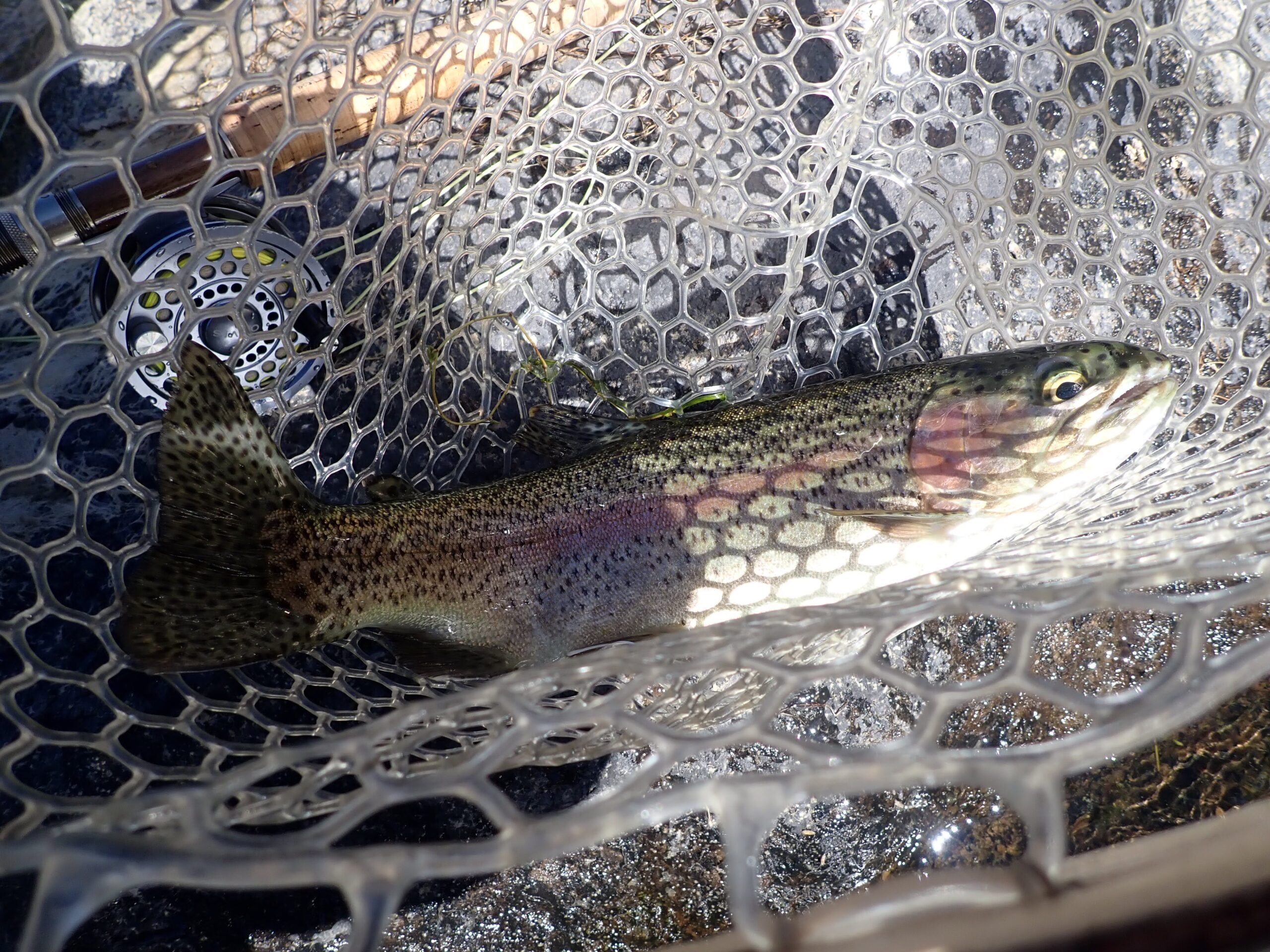 A Second Splendid Rainbow Trout
A Second Splendid Rainbow Trout
At one o’clock I noticed a dense swarm of mayflies above the river, that I assumed were tricos. Based on my experience, this was rather late in the day for the trico mating cycle. I carefully observed the downstream river for rising fish, but I never saw any. A bit later in the afternoon I noticed a very sparse emergence of blue wing olives, but once again the event did not produce any surface feeding. I persisted with my dry/dropper nymph rig throughout my time on the water, and I was not tempted to make the conversion to dry flies.
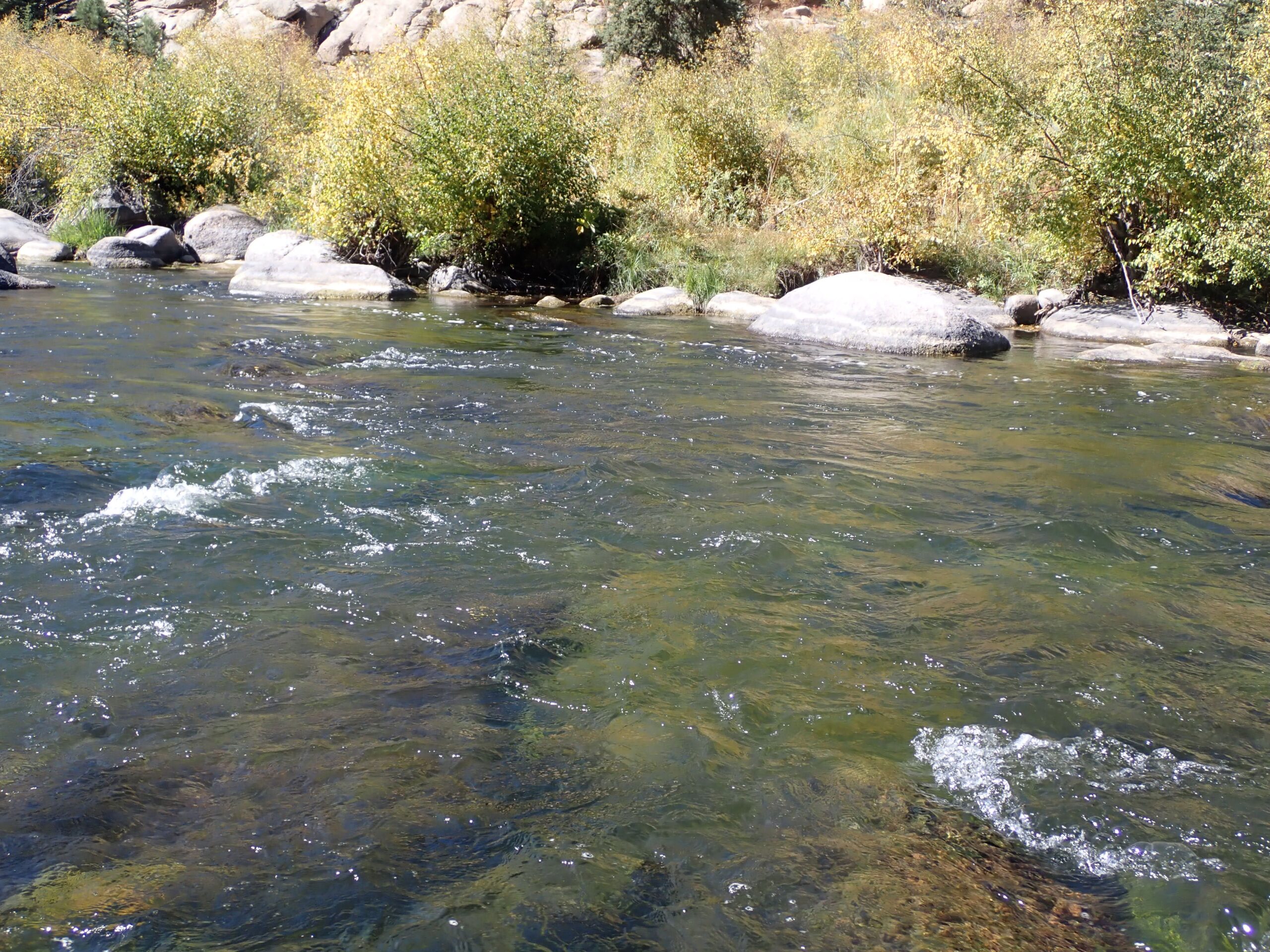 Rainbow Lived in the Run Near the Bank
Rainbow Lived in the Run Near the Bank
Monday was an enjoyable day on the South Platte River. The temperature rose to the upper sixties in the afternoon, and I was actually a bit overheated in my fleece. The sky was a brilliant blue, and the foliage was in the early stages of turning into red and gold. I landed nineteen wild trout including three in the fifteen to sixteen inch range, a pair of feisty thirteen inch rainbows. and a couple standard twelve inch brown trout. The remainder were on the small side, but I appreciated them nonetheless. I closely observed the type of river structure that produced positive results, and I applied this knowledge to my angling progression to achieve decent results. For me, fly fishing is a continuous learning exercise, and that is what makes it my passion.
Fish Landed: 19

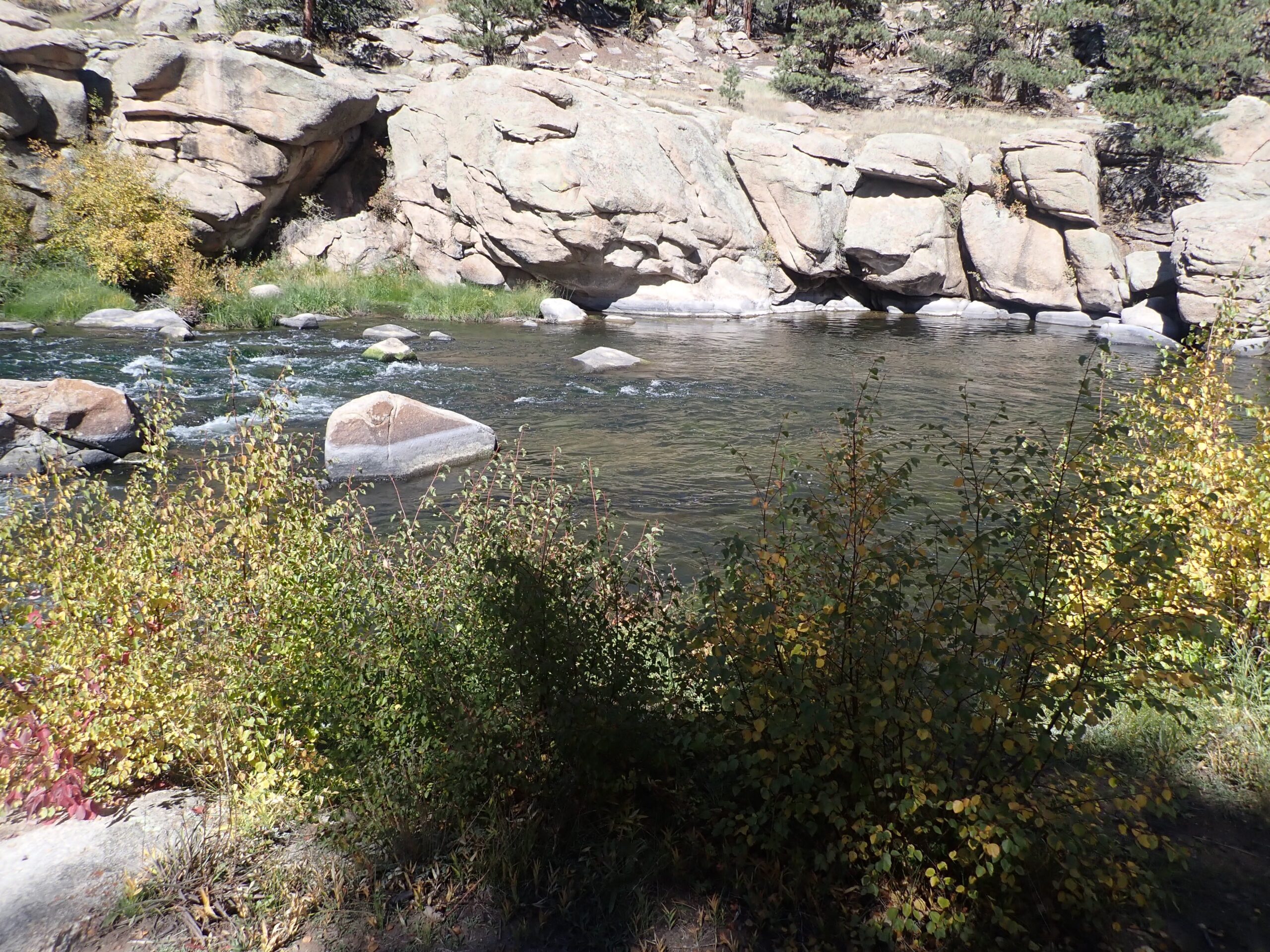 Lunch View
Lunch View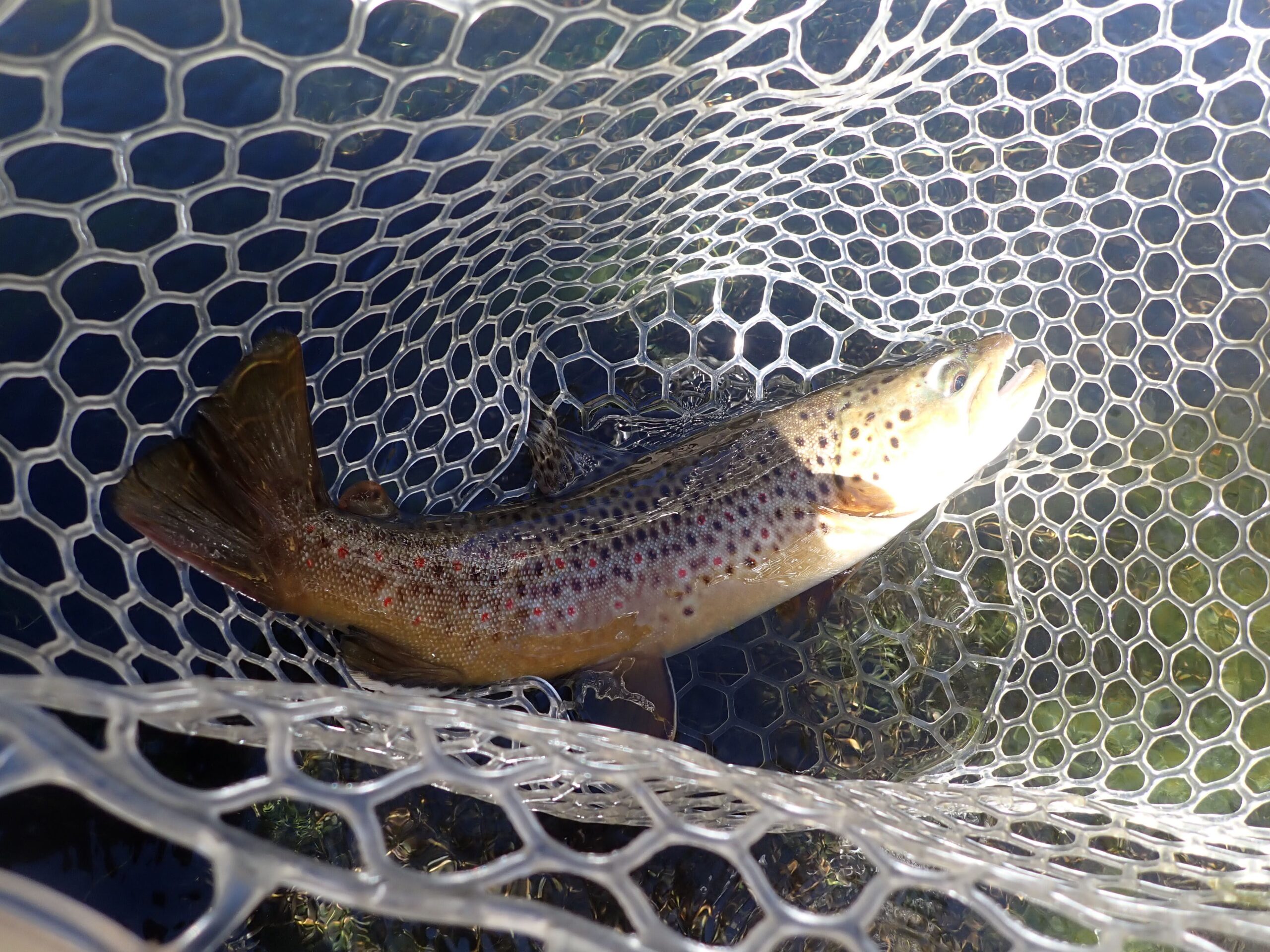 Fifteen Inch Brown Trout
Fifteen Inch Brown Trout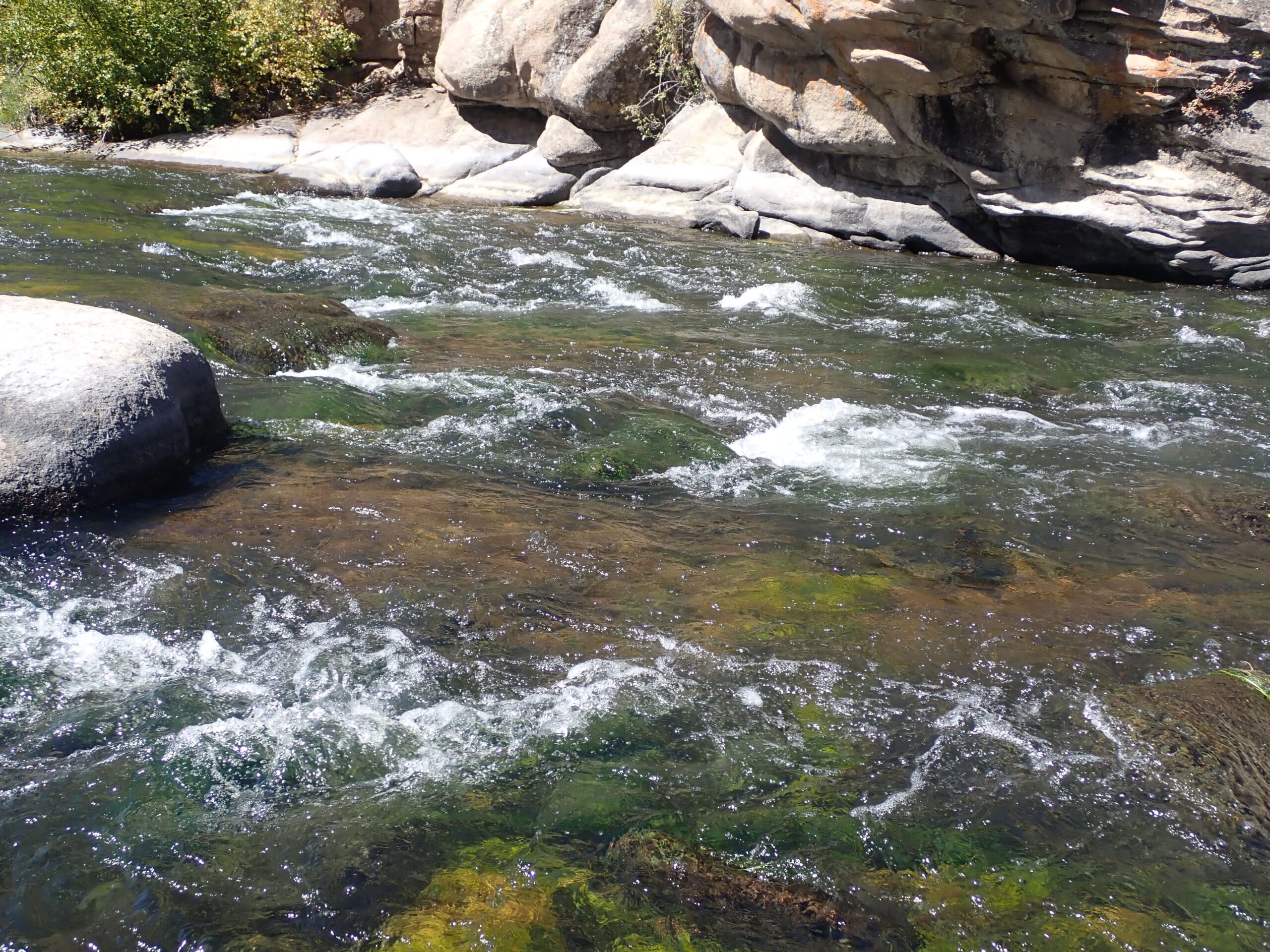 Rainbow Home
Rainbow Home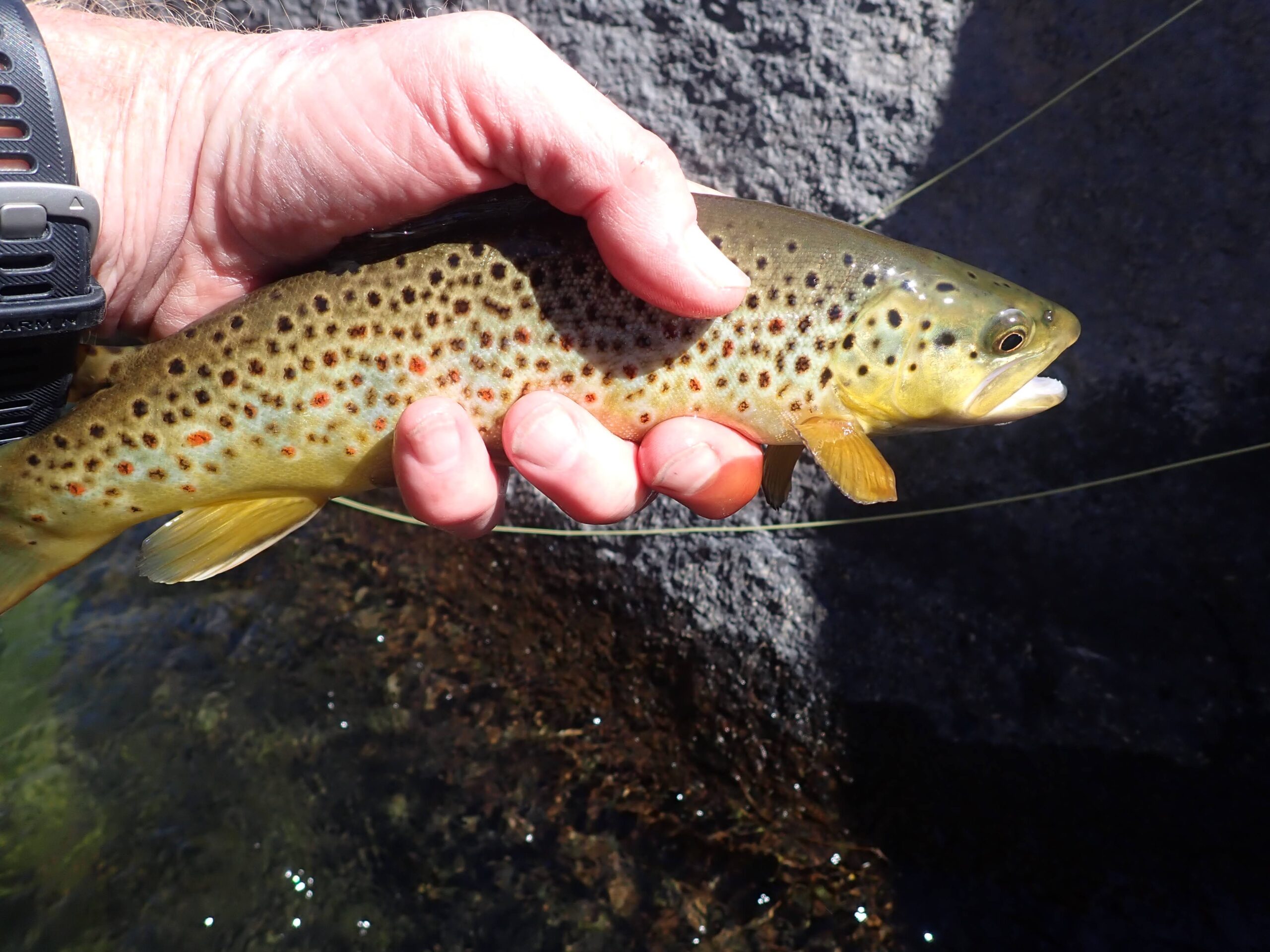 Decent Brown Trout
Decent Brown Trout